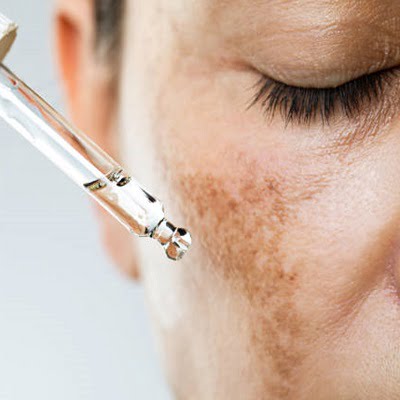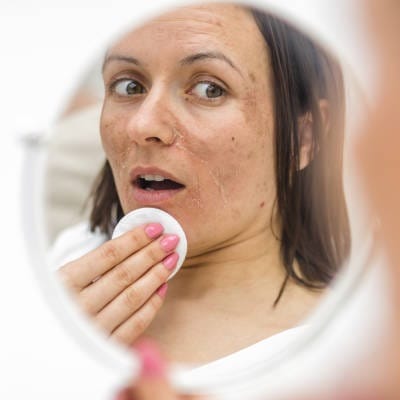
The emergence and persistence of melasma, a skin condition characterized by hyperpigmented patches, have garnered significant attention in Pakistan. This condition’s aetiology is complex and multifaceted, with various factors contributing to its prevalence. From genetic predisposition to hormonal fluctuations and extensive sun exposure, multiple elements interplay to give rise to melasma in Pakistan.
Understanding the specific reasons behind its prominence in Pakistan necessitates an exploration of the intricate interplay between these factors within the country’s unique environmental, cultural, and genetic landscape.
What Is Melasma?
Melasma is a common skin disorder characterized by brown or greyish patches on the skin, typically appearing on the face. However, they can also occur in other sun-exposed areas of the body. This condition is often linked to increased pigmentation due to the overproduction of melanin, the pigment responsible for skin colour.
While the exact cause of melasma is not fully understood, factors such as hormonal changes, genetics, and sun exposure are believed to contribute. Melasma is particularly prevalent in regions with intense sunlight, like Pakistan, where combining these factors can lead to its development.
Reasons For Getting Melasma In Pakistan:
The prevalence of melasma in Pakistan can be attributed to genetic, hormonal, environmental, and cultural factors. Genetic predisposition plays a role, as individuals with a family history of melasma are more susceptible. Hormonal changes such as pregnancy, hormonal therapies, or oral contraceptives can trigger its onset.
Pakistan’s high sun exposure, aggravated by a lack of adequate sun protection and traditional clothing practices, contributes significantly. Moreover, cultural preferences for fair skin can lead to skin-lightening products containing potentially harmful ingredients that can exacerbate melasma. These intertwined factors underscore the complex reasons behind melasma’s occurrence.
The Best Treatment For Melasma:
The choice of cosmetic treatment for melasma depends on various factors, including the severity of the condition, individual preferences, and the guidance of a dermatologist. While there’s no one “best” treatment, several cosmetic procedures have shown promise in managing melasma:
Chemical Peels:
Chemical peels involve applying a solution to the skin, causing controlled exfoliation. Medium to deep peels can help improve pigmentation irregularities and promote a more even skin tone.
Microdermabrasion:
This procedure uses a device to gently exfoliate the outer layer of skin, removing pigmented cells and promoting skin renewal.
Laser Therapies:
- Fractional Lasers: These lasers target specific areas of the skin, breaking down excess melanin and stimulating collagen production, leading to improved skin texture and tone.
- Q-switched Lasers: These lasers target pigmented areas to break down melanin without affecting the surrounding skin.
Intense Pulsed Light (IPL) Therapy:
IPL devices emit high-intensity light pulses that target melanin, helping to fade pigmented spots and even skin tone.
Micro needling with Radiofrequency (RF):
This procedure combines micro needling, which stimulates collagen production, with radiofrequency energy to improve skin texture and tone.
Platelet-Rich Plasma (PRP) Therapy:
PRP involves using the patient’s blood components to stimulate collagen and improve skin texture and tone.
Cosmetic Fillers:
In some cases, dermal fillers can be strategically placed to help smooth out uneven skin and improve texture.
Remember that the effectiveness of these cosmetic treatments can vary based on the individual’s response, and multiple sessions might be required for optimal results. Consulting a qualified dermatologist or skincare professional at SKN Cosmetic Clinic Islamabad is crucial before cosmetic surgery.
They can assess the individual’s skin condition, recommend the most suitable treatment, and guide them through the process to achieve the desired outcome while minimizing potential risks and side effects.
All Summed Up!
The high prevalence of melasma in Pakistan is a multifaceted issue influenced by genetic predisposition, hormonal fluctuations, UV radiation exposure, cultural practices, and environmental factors. Understanding these interrelated triggers is essential for devising effective prevention and management strategies.
Increased awareness about sun protection, proper skincare, and the potential risks associated with certain beauty practices can empower individuals to take proactive steps towards maintaining healthy and radiant skin. Moreover, further research and education are crucial to addressing the underlying factors contributing to melasma and enhancing the overall well-being of those affected by this skin condition.



